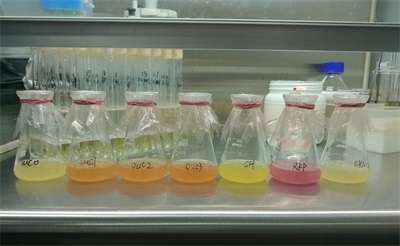This is the first time for our team JNFLS_China to participate iGEM competition this year. As a new team, it is necessary and indispensable for us to communicate and collaborate with other teams. Here we will introduce our cooperation project and we appreciate all the teams and people that ever helped us.
1. Communication with Shenzhen_SFLS team
In early August this year, we were invited to Guangdong Shenzhen for meet-up by Shenzhen_SFLS team. So some players of our team went to communicate friendly with them at the auditorium of Shenzhen Foreign Language School. We started with drawing a picture to describe the experience of our performing project , then we introduced ourselves project each other, asked some questions and discussed the possibility of collaboration . In the pictures explanation and discussion process, we understood gradually and learned much from each other in which We had lots of fun!
Besides above, we listened to a report regarding the mechanism, application and advantages of transgenic plant by a PhD who gave us some opinions and suggestions for our project. We visited the library, assembly hall, stadium and a big beautiful campus which are very exciting us. Unfortunately, we have to end our meet-up hastily because of the typhoon coming.





2. Collaboration wth OUC_China team
We contact the OUC_China team from Ocean University of China which is located in the same province with us. We communicate iGEM projects and experiment advantages each other. Since our team members perform experiments in a lab equipped with advanced instruments of Shandong University, we are skilled at fluorescence measurements with the guidance of teacher and graduate students. So we helped OUC_China team to determine some fluorescence data of their one device in this season project https://2016.igem.org/Team:OUC-China/Collaborations






3. Collaboration wth FAFU_China team
When we talked with FAFU_China team, they showed a very strong interest at the phenomenon that the fluorescent intensity of the experiment group is stronger than normal group. In order to further explore the reasons, their team designed the proof of experiment for us, and suggested us using flow cytometry to collect more accurate data (https://2016.igem.org/Team:JNFLS_China/Experiments and Results). They provided detailed protocol for us, and we carried out the experiment, indeed observed an interesting phenomenon. We thank FAFU_China team very much for their enthusiasm here!

